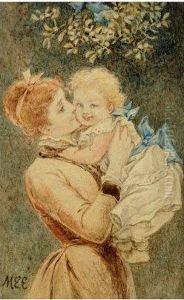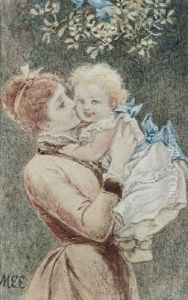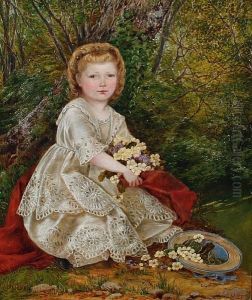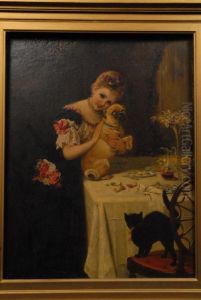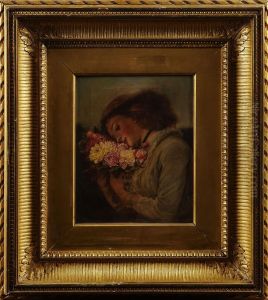Mary Ellen Freer Edwards Paintings
Mary Ellen Edwards, often known simply as M.E. Edwards or under her married name, Mary Ellen Freer, was a prolific English illustrator, painter, and engraver whose work left a significant mark on the Victorian period's visual culture. Born in 1859, Edwards grew up in a time when the roles and opportunities for women in the arts were beginning to change, albeit slowly. Despite the societal constraints of her era, she managed to carve out a successful career, becoming one of the most sought-after illustrators of her time.
Mary Ellen Edwards' journey into the arts began at a young age, showing an early talent that would be honed through formal education. She was fortunate to receive training at a time when art schools were starting to open their doors to women, albeit with some restrictions. Edwards' style was versatile, capable of capturing both the intricacy of domestic scenes and the grandeur of historical narratives, making her work highly desirable for magazines, novels, and children's books.
Throughout her career, Edwards contributed to numerous publications, including the Illustrated London News and The Graphic, two of the era's most influential magazines. Her illustrations often accompanied serialized novels, bringing to life the works of authors such as Charles Dickens and Anthony Trollope. Her ability to translate words into vivid, emotive images made her an integral part of the reading experience during the Victorian era.
Edwards' marriage to Edwin Edwards, a lawyer and talented amateur artist, in 1864, marked a new phase in her life. It was after her marriage that she began signing her works as Mary Ellen Edwards (MEE), integrating her maiden and married names. Her husband's support was crucial, allowing her to continue her artistic pursuits even after marriage—a rarity for women at the time.
Despite her success, Mary Ellen Edwards faced the challenges typical of female artists of her time, including the struggle for recognition in a male-dominated field. Nonetheless, she managed to sustain a long and productive career, diversifying her artistic output to include watercolors and oils, in addition to her illustrations. Her works were exhibited at prestigious venues like the Royal Academy, showcasing her versatility and skill across different mediums.
Mary Ellen Edwards' death in 1910 marked the end of an era but not the end of her influence. Her legacy lives on through her contributions to Victorian art and culture, serving as an inspiration for future generations of women in the arts. Her work remains a testament to the power of illustration to capture the imagination, tell stories, and evoke emotion, cementing her place in the annals of British art history.
